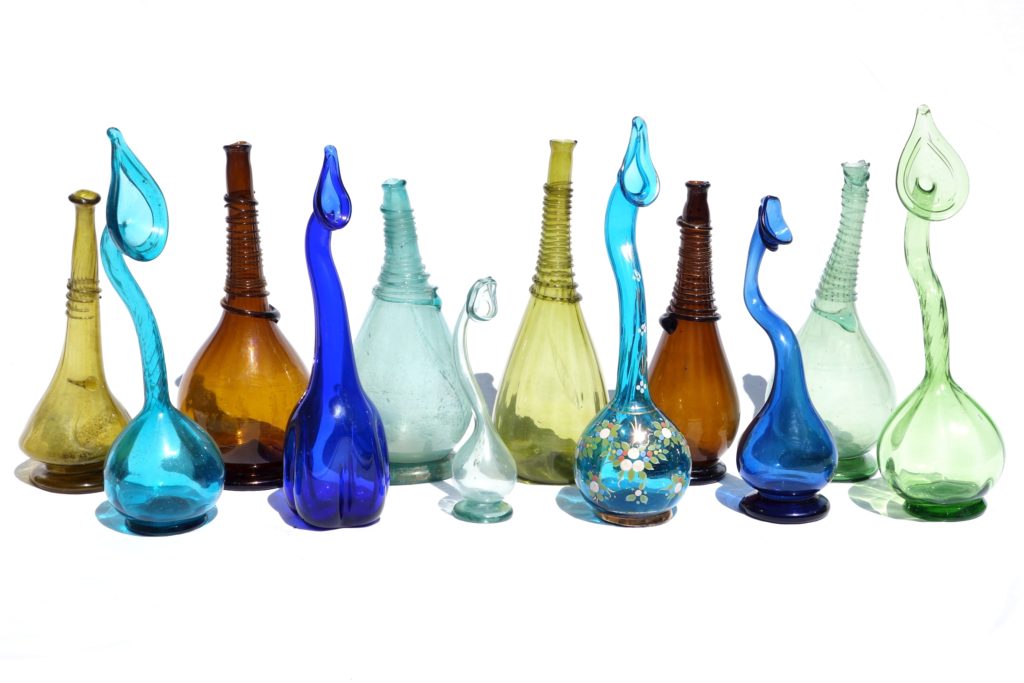 From what I have read, they have been popular in much of the Middle East for hundreds of years – the form dates back to at least the 10th century. From what I have read, they were both made in Persia and shipped to Persia from other manufacturing regions like Bohemia, at least during the past five hundred years. Above are the 12 sprinklers in my collection as of August 2013. It is my conjecture that the spiral-bound bottles were used as Rose Water Sprinklers, rather than as Decanters, as I had earlier postulated. In particular, the lip on PC-032 seems to have been designed to disperse liquid, rather than to pour it carefully.
From what I have read, they have been popular in much of the Middle East for hundreds of years – the form dates back to at least the 10th century. From what I have read, they were both made in Persia and shipped to Persia from other manufacturing regions like Bohemia, at least during the past five hundred years. Above are the 12 sprinklers in my collection as of August 2013. It is my conjecture that the spiral-bound bottles were used as Rose Water Sprinklers, rather than as Decanters, as I had earlier postulated. In particular, the lip on PC-032 seems to have been designed to disperse liquid, rather than to pour it carefully.
The above is a set of eight Rose Water Sprinklers that sold in 2008. They come in a handsome array of sizes. The four on the left, which seem to be a form popular in museum collections, is of a paler blue like PC-120 – but never having held one, I cannot confirm for certain.
Broad-lipped Rose Water Sprinklers
The Spiral-Bound Rose Water Sprinklers are strikingly similar to the Type 1 Saddle Flasks – both in colour and finish. Whether both date from the 1600s, or from the 1600s through to the 1800s, is something still to be determined. Additionally, some of these bottles have been found in India, leading some to claim them as of Indian manufacture. My suggestion is that, as Rose Water was exported in substantial quantity from Persia throughout the region, even in the 1600s, that these bottles simply made their way as exports, with or without contents, to their current homes in India.
Spiral-Bound Rose Water Sprinklers
All six of the Spiral-Bound Rose Water Sprinklers in the collection have vertical ribbing – I can only guess that was done for aesthetic reasons. Also, when carrying the bottles up a flight of stairs to measure and photograph them, it quickly becomes obvious that the stringing around the neck would be very helpful to aid in carrying them, particularly if they were at all wet.
Following is an article I found online – given how things on the Internet come and go, and that this article was quite informative, I’ve reproduced it here in its entirety.
Scent Of Roses; Rose-Water Sprinklers Of The Islamic World
By Géza Fehérvári
Special to the Arab Times
Perfumation and thurification have very long history and can be traced back to prehistoric times. For thurification various types of incense burners were and are used until this day. For perfumation rose-water was used which was stored and applied in specially made sprinklers. Rose, from which the rose-water was made, has a very long history. Some scholars claimed that the importance of the rose or indeed, the origin of roses was discovered by the Persians. It is, however, very unlikely, since other sources point to India where, it is claimed, as early as the 5th millennium BC, at the time of Lord Krishna, rose fragrance was already prepared by a special and expensive process. This article does not intend to describe the delicate preparation of the rose-oil or rose-water, but rather to deal with the development of the types of vessels in which they were stored and used.
Scholarly excavations in the Near and Middle East brought to light fragments of vessels which may have been used as perfume containers and sprinklers. The sprinklers were made of glass, pottery or metal and from the earliest times the majority of them were decorated. While not much is known about the shape of such objects in early antiquities we are somewhat better informed about them from the Greek world and from the Roman period. That roses were playing an important role in the life of ancient Greeks and Romans is suggested, by among many other things, that roses decorated the walls of the Palace of Knossos in Crete, dating back to the 2nd millennium BC. In the Roman Empire roses have appeared not only as wall decorations, but rose petals were used for embellishing tables at receptions or, as it is still used in certain countries, throwing their petals on young couples at weddings or on soldiers returning from wars. Roses also had medicinal properties. They may be used for soar throats, headaches and, as it is widely used today, rose hips for tea, being an important source for vitamin C.
Early evidence for the use of such perfume containers and sprinklers come not from metalwork or pottery but surprisingly, from Roman glass. In the Roman Empire glass manufacture was not only well advanced, but also widespread. Yet, the major centres for Roman glass were in the eastern part of the Empire, namely in Asia Minor and Syria. In the western part glass was produced by workshops in present day France and Germany. Tall and upwards tapering narrow tubes, known as unguentaria or “tear bottles”, were used for keeping perfumes. They had narrow cylindrical bodies and flat everted rims on top (fig. 1). They must have had a cover, but unfortunately we have no information what type they were. It is possible that some of these covers could have been perforated and in that case they may have also been used as sprinklers. Nevertheless there was a different type of vessels which were better suited for the purpose. They had a large round and flattened body with a short cylindrical neck. They were known as “pilgrim flasks”. They were usually made of green glass. In the past it was suggested that they were used for containing holy oil or holy water, carried by pilgrims visiting shrines or holy places.
However, this was very unlikely since this type of vessels were not very suitable for that purpose. It was more probable that they were used as perfume or rosewater sprinklers. From this very thin and round flasks may have developed the somewhat wider bodied type which was already provided with a pair of small handles flanking the short cylindrical neck. The illustrated example belongs to this later type of “pilgrim flasks”. It was made of mould-blown and wheel-cut decorated green glass and can be dated to the Umayyad period, i.e. to the late 7th or early 8th century. Similar examples were discovered in scholarly excavations in southeastern Turkey and Syria.
For storing perfumes the shape of the “tear bottles” or unguentaria continued, but at the same time a different version had also became popular, a new type, known as the “molar flask”. They were made either of white or yellow glass or were carved out of rock crystals. They had square bodies, tall cylindrical or polygonal necks and were supported by four spiky legs. They originate from Egypt, where they were popular during the Tulunid and early Fatimid periods, between the 9th and 10th centuries AD. Evidence for the continuity of rose-water sprinklers is well provided by surviving bronze and later by copper and silver examples. The Arabic name for these rose-water sprinklers is qum-qum. In Iran and Central Asia, first of all in Afghanistan, such metal vessels became very popular and widespread during the early medieval Islamic period. There were several types made, but perhaps one of the earliest of these had pear-shaped bodies which was decorated with almond-shaped, or as they are sometimes called ‘tear-drop’ elements. These were not only decorative, but also functional since they provided better grips on the vessels. They had short waisted necks, opening mouths which had several small knobs around the rim. It is claimed that this type owes its origin to the earlier Roman bronze sprinklers.
In Persian they are known as golabdan. These are dated to the 9th or 10th century. The illustrated example may have been made in the famous metalworking centre based at Ghazni in Afghanistan.
A second type of these metal sprinklers had cylindrical gadrooned body and shoulder with polygonal neck and on its top slightly recessed, there was the filter, a clear evidence that they were used as sprinklers. Similar vessels were excavated and discovered in northeastern Iran, in Khorasan and they may be dated to the 10th or 11th century. A third type of these bronze sprinklers, had spherical bodies, resting on splayed foot, had short waisted neck, cup-shaped mouth which again display small knobs around its rim. The illustrated example is a copper and silver inlaid vessel, showing three short cartouches on the upper parts of its body which are outlined in copper inlay and inside each there is a silver inlaid word, written in the so-called Kufic style, but not correct, since most of the metalworkers were illiterate and hence easily made mistakes. The words, they intended to write are al-‘izz ‘glory’, karamat ‘generosity’ and daulat ‘power’. Among the cartouches there are clusters of dots, which was one of the hallmarks of Khorasan metalwork. It appears that similar vessels were also made in glass. The Tareq Rajab Museum possesses a small rose-water sprinkler which is made of glass, the colour of which cannot be determined because of the heavy fluorescence covering it. It has a spherical body and a cylindrical neck with small ribs around the rim. It may be attributed either to northeastern Iran, i.e. to Khorasan, or to Central Asia, most likely to Afghanistan or Uzbekistan and dated to the period between the late 9th and early 11th centuries.
This latter type was also produced in ceramics. Two such pottery sprinklers, which were known in Persian as golabdan, are in the Tareq Rajab Museum’s collection. One of them was made of red earthenware and coated with a light green lead glaze. Its top is pierced by tiny holes testifying that it was indeed used as a sprinkler. What is more interesting that its shape is very similar to contemporary bronze vessels; furthermore there are likewise thirteen tiny ribs around its rim. This pottery sprinkler may have been made in Afghanistan and dated to the 10th or 11th century. Another pottery sprinkler in the Tareq Rajab Museum’s collections was made of the so-called composite white fritware and is coated with a green glaze. It has a nearly spherical body, short cylindrical neck, cup-shaped mouth with small knobs around it and everted rim and rests on a small foot-ring. Similarly to the previous bronze and glass examples, it may be attributed to Khorasan, probably to the workshops of Nishapur and dated to the late 12th or early 13th century.
Islamic glass sprinklers of the mediaeval Islamic period during the 11th to early 13th centuries reveal close relationship to the much earlier Roman “pilgrim flasks” and indeed, they may owe their origin to them. But while the Roman examples had very thin flat round bodies and short necks, the Islamic sprinklers, became wider, almost globular, but somewhat flattened and. furthermore their necks are considerably taller and tapering upwards. This type was very popular in Egypt and Syria. Other contemporary examples present bulbous or conical bodies with a tall, but somewhat wider tapering necks. Some of them, like the illustrated example have trailed decoration at the bases of their necks and vertical ribs on its body. This sprinkler was most likely made in Khorasan and can be dated to the 11th or 12th century.
Interestingly, the same shape has also been attempted in pottery. The Tareq Rajab Museum possesses a small lustre painted pottery flask, which can be dated to the first half of the 13th century. It is most likely the product of Kashan, which was one of the most important pottery centres during the Seljuq period in Iran. It may be identified as a flask, however, as it has been shown above, its shape is identical to contemporary Iranian bronze and glass sprinklers, except that it has a spherical body, a tall and tapering neck terminating in an everted rim. Originally, if indeed it was used as a sprinkler, it had to have a metal mount which since has been lost. Around the base of the neck there is a benedictory inscription, reading: Baraka li-sahibihi, “blessing to the owner”.
An almost contemporary Iranian rose-water sprinkler was made of mould-blown cobalt-blue glass which has a vertically ribbed squat body and a trailed decoration at the base of its neck. Once more it is most likely that originally it had a metal mount which could have been made either of copper or silver as later examples testify. When we examine closely the later sprinklers of India and Turkey, we cannot fail to notice that they have developed from these mediaeval examples but, with some striking differences. First of all both the Indian and the Turkish examples have completely spherical bodies. The Indian vessels were made, almost without exception, of colourless glass. The surviving examples present simple vessels without any surface decoration, save the silver mount on top, however, some were provided with fluted bodies and necks.
In a way Turkish glass sprinklers offer a sharp contrast to their Indian counterparts. They were all made of coloured glass, green, blue or purple and, without exception they were provided with polychrome painted decoration. They have spherical bodies, cylindrical necks and are supported by tall, splayed foot with a deep convex base. Their bodies and necks present richly painted decoration in gold, pink and white over the dark glass ground. The top is tall and sharply pointed, having a tiny hole on its peak. These Turkish glass sprinklers were made at Beyköz, on the Asiatic side of the Bosphorus. These workshops at Beyköz were established during the late 17th centuries and remained active until the end of the late 19th or early 20th century.
Turning once more to pottery sprinklers, we find that it is from the 17th century onwards that we come across large number of pottery sprinklers from Turkey. Interestingly so far no such example has been reported from the workshops of the major and well-known pottery centre of Iznik.Nevertheless after the decline of Iznik in the late 17th century, when production was taken over by the potters of Kétahya, large number of rose-water sprinklers are known to have been made there. They usually have pear-shaped bodies and tall tapering necks which usually have a moulded collar at its base. The body may be made round or facetted by vertical ribs, but in every instance they are decorated, usually in polychrome.
A few and earlier examples, in imitation of Chinese porcelain, may have only cobalt-blue painted decoration. The necks always remained plain and undecorated because of the metal mount that was used as a stopper and was attached to the body by a chain. The mounts were mostly made of silver and decorated in repoussé©. These Kétahya sprinklers are dated to the 18th or early 19th century. As regards to metal sprinklers between the mid-13th and 16th centuries, we have only a few, but extremely nice examples. One of the finest known metal sprinklers, dates from the Mamlék period. It was made for the Mamlék Sultan Hasan (748/1347 – 762/1361) and is decorated with extensive gold and silver inlay. Its shape is very similar to the previously mentioned glass sprinklers, except that the body is pear-shaped. The tall and tapering neck has a collar at its lower end, but sadly the top is missing. Today it is preserved in the Museum of Islamic Art in Cairo.
After the sixteenth century an entirely new type of sprinklers were introduced and played important roles it seems in three countries, namely in Turkey, India and China. These new type of vessels were made of brass, copper or silver, some even of steel. They all had elegant, varied shapes and were richly decorated either in repoussé© or were incised and some of them even gilt. A 17th century cast copper sprinkler, in the Tareq Rajab Museum, with extensive repoussé© decoration reveals traces of enameled designs. It has a round body, flattened on two sides, has a tall and tapering neck with a collar below and on top is a rose-shaped stopper with tiny holes. The two flat sides of the body are decorated with flowers and series of petals are on the base and lower part of the neck. Another Turkish example is made of gilt, so-called tombak copper with hammered and repoussé© decoration. The body among the flutes is decorated with rising blossoming flowers, while the shoulder displays series of ribs followed by lotus petals. The polygonal and tapering neck terminates in a mushroom-shaped stopper. A further example from Turkey displays a globular artificial amber body and neck, with hammered and repoussé© silver mounts.
In India finer examples were made of gold and were enriched with rubies, diamonds and pearls. The Tareq Rajab Museum hasn’t got any of these richly decorated Indian sprinklers, but possesses a large number of silver and one steel example which has rich gold damascened decoration. It was made of cast steel and its spherical body and tall tapering neck is decorated all over in gold. Floral branches are forming an intricate network of medallions and diamonds which are all filled by blossoming flowers. The neck terminates in a small domical stopper which is capped by a small knob with tiny holes. A silver made example from India depicts a body which is formed by two opposed lion figures, resting on an oval and lobed base, decorated with lotus palmettes; a flower-shaped collar acts for the base of the neck which is made-up of two elephant heads and twisted trunks and terminate in a large blossoming lotus.
Another interesting and somewhat unusual rose-water sprinkler originates from the Caucasus and is the work of Armenian artists. It has double bodies, an inner silver gilt body for holding the liquid and an outer extremely fine openwork and engraved decorated silver outer one providing a decorative shield for the vessel. An interesting contemporary rose-water sprinkler was made not long ago by an Afghan refugee artist in Isfahan. Its shape follows the earlier traditional forms having an ovoid body over a tall and widely splayed foot, rising shoulder and tall tapering neck with two collars on its lower part and terminates in a rose-bud filter. The entire vessel is richly decorated in gold inlay displaying floral designs. The large display cabinet at the lower part of the Tareq Rajab Museum’s entrance hall displays numerous silver made rose-water sprinklers, originating from Ottoman Turkey, Mughal India and some from China.

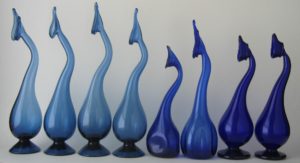
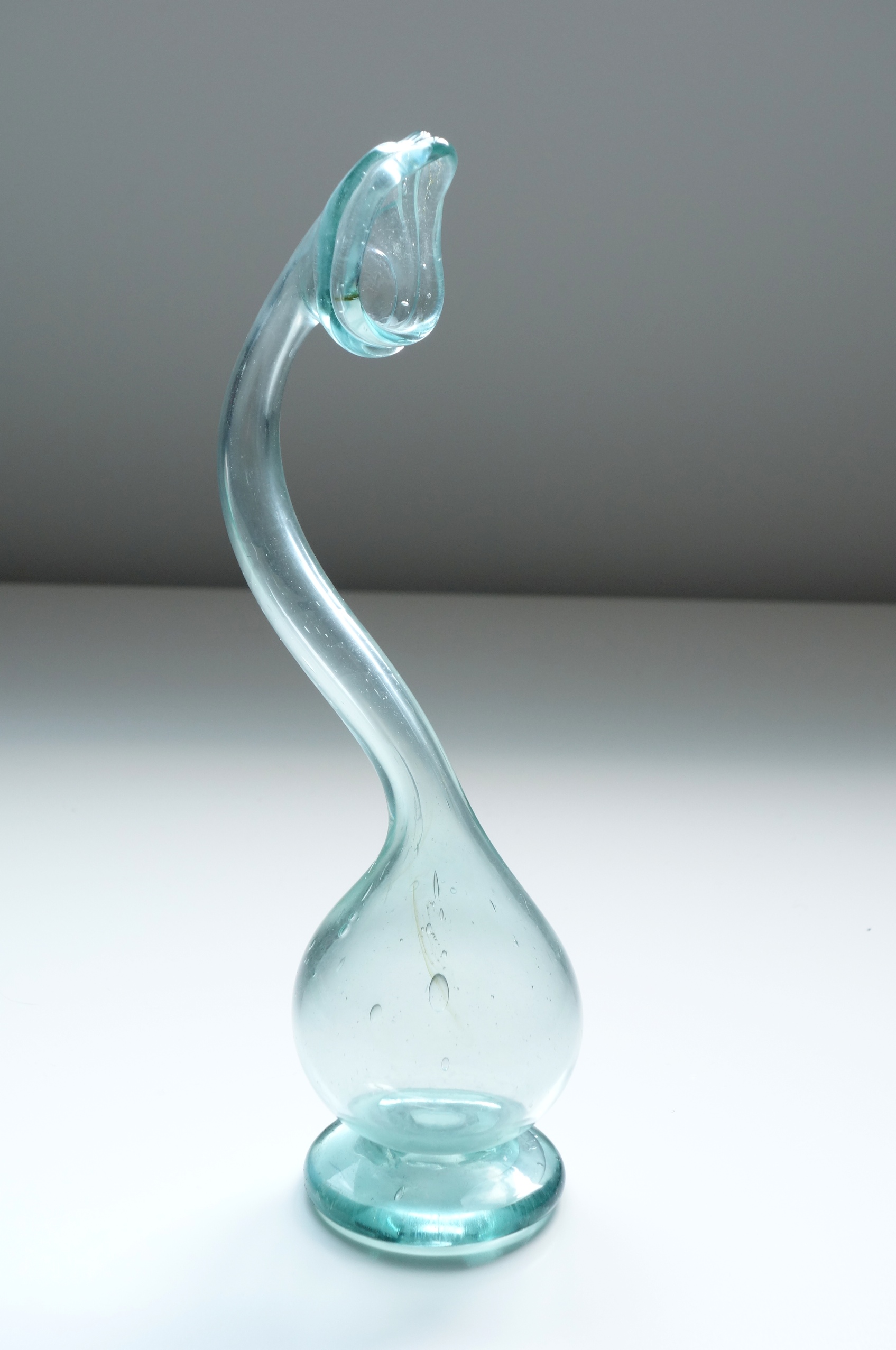
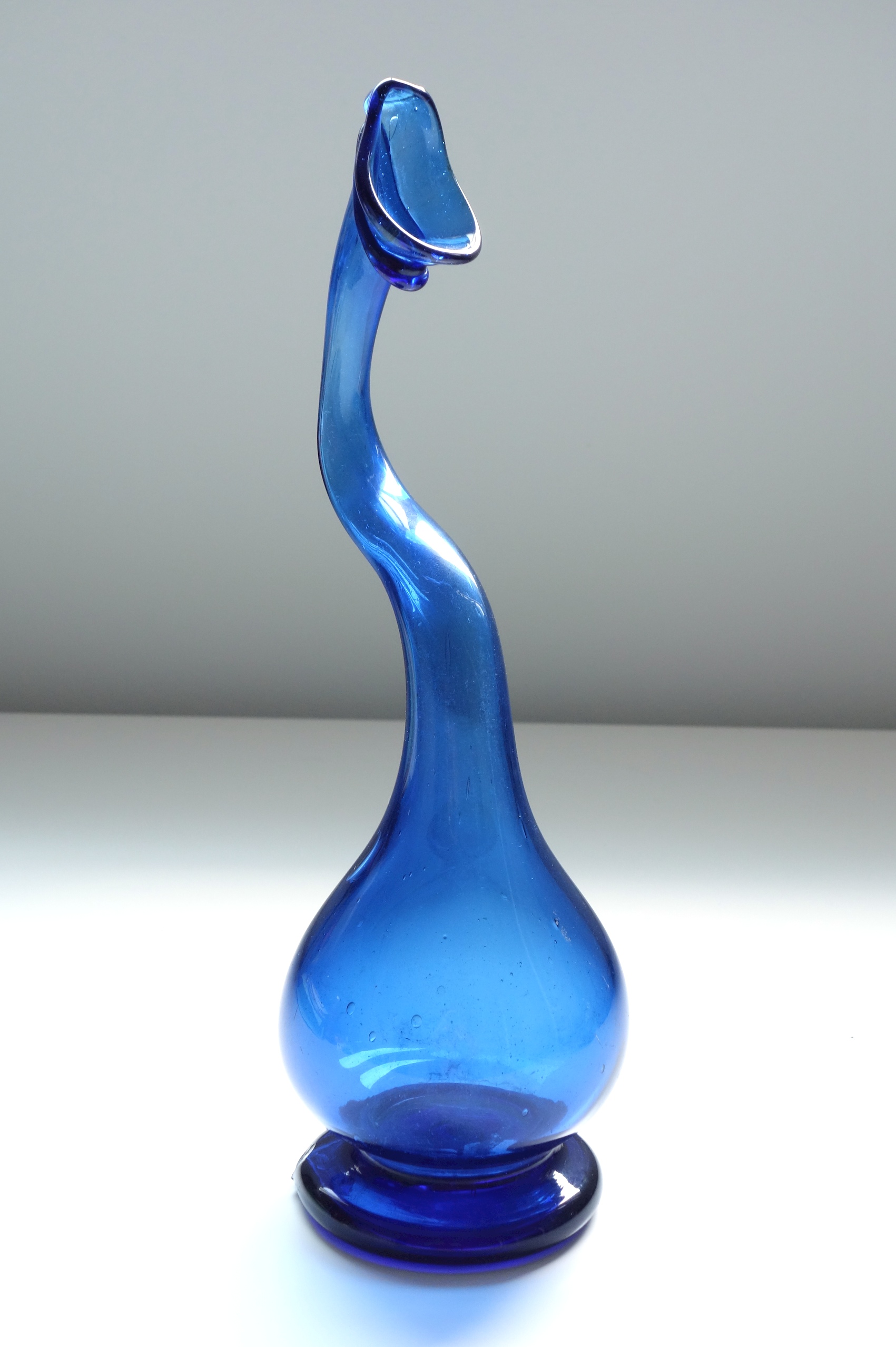
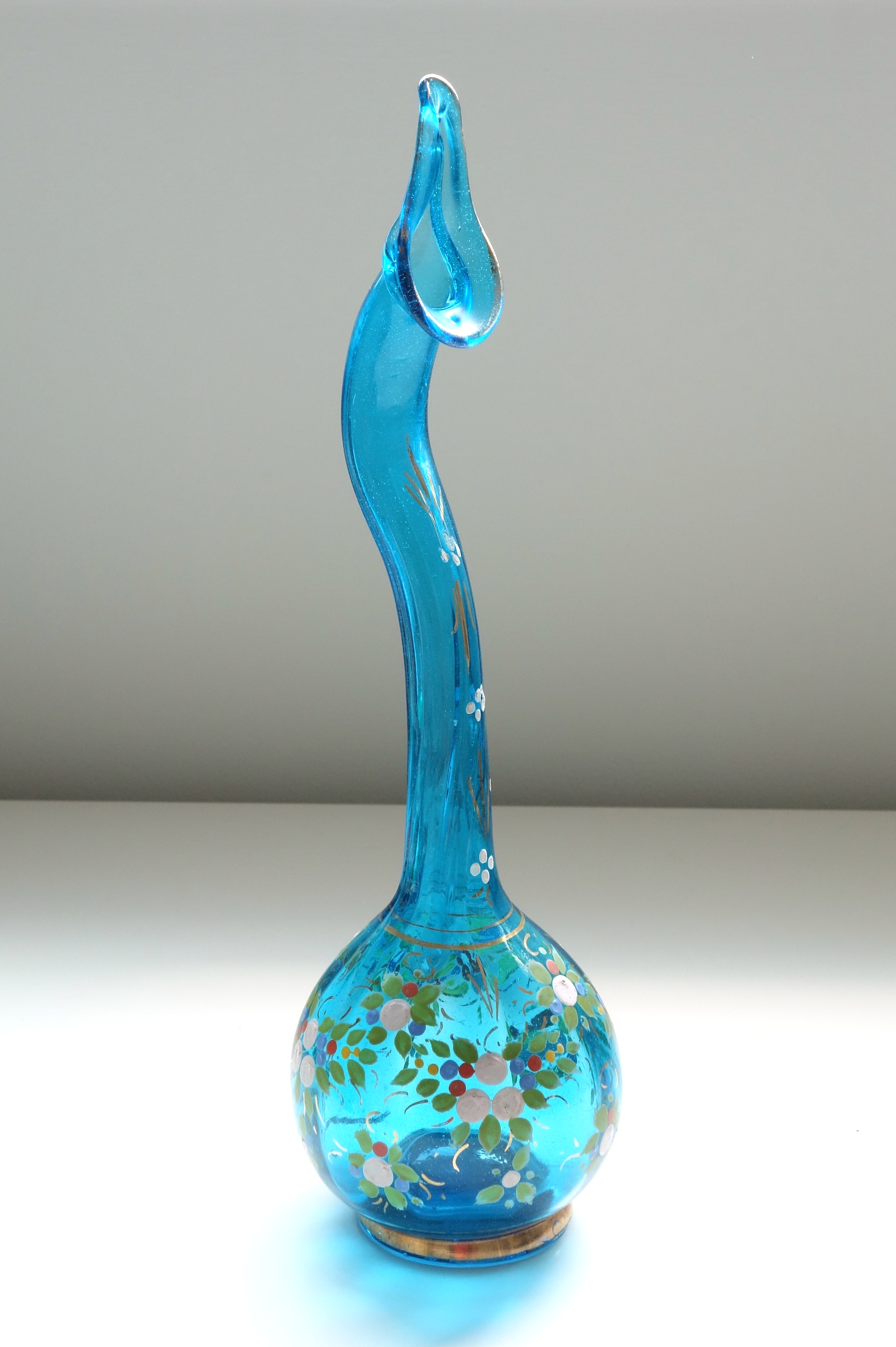
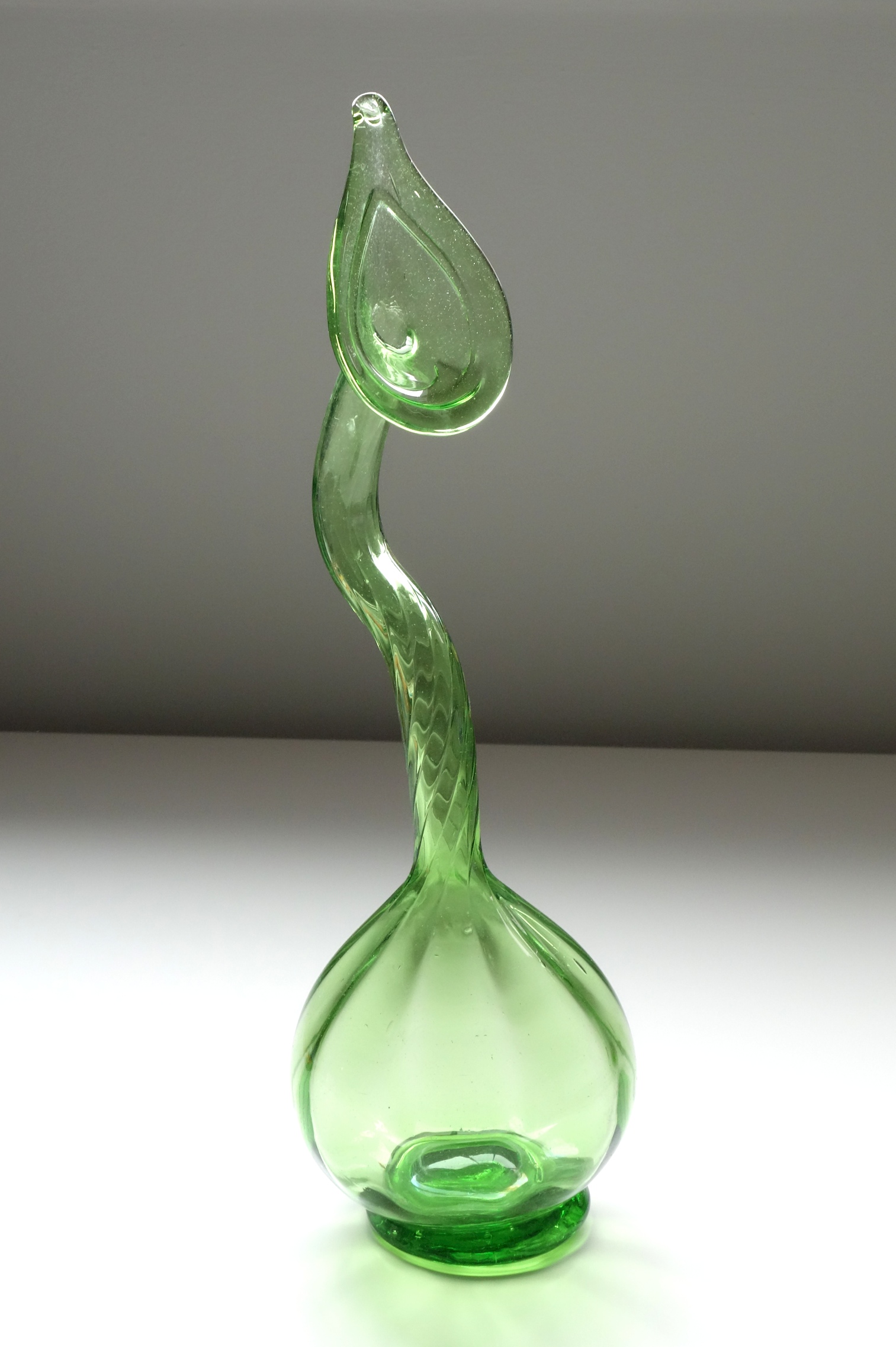
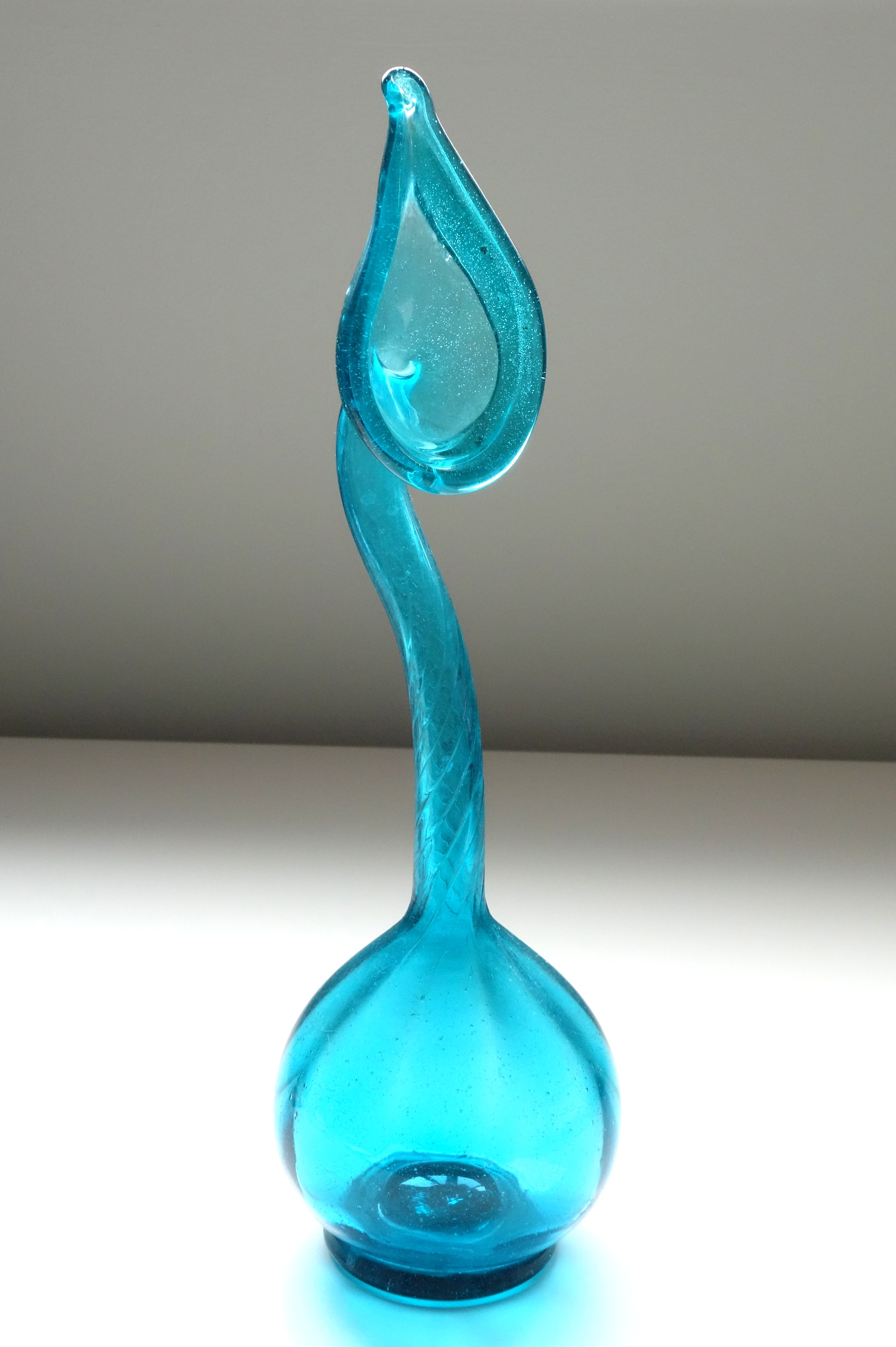
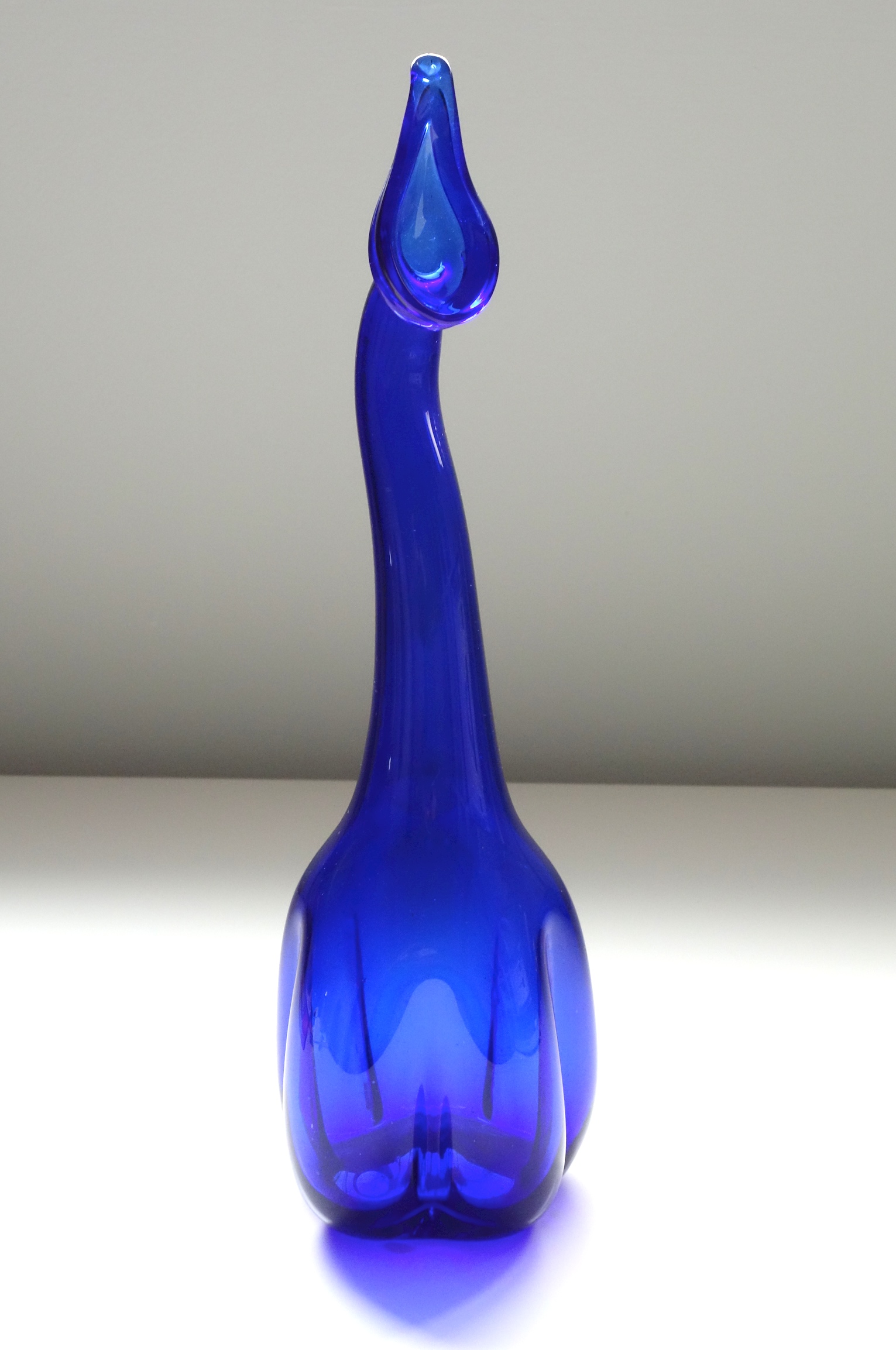
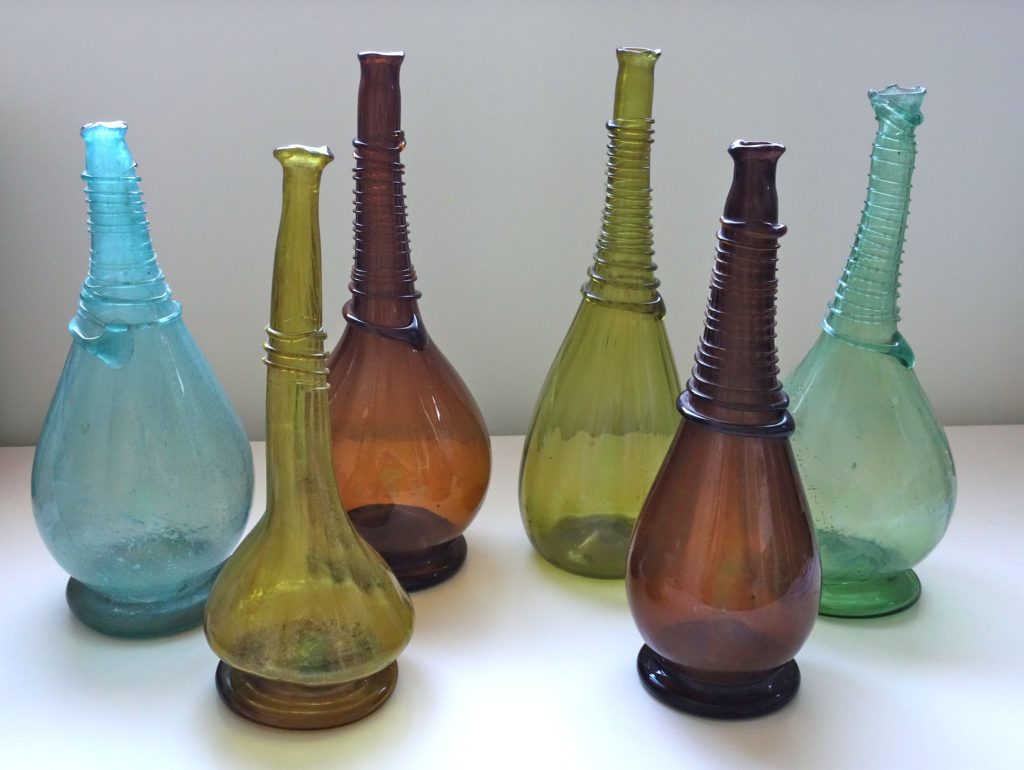

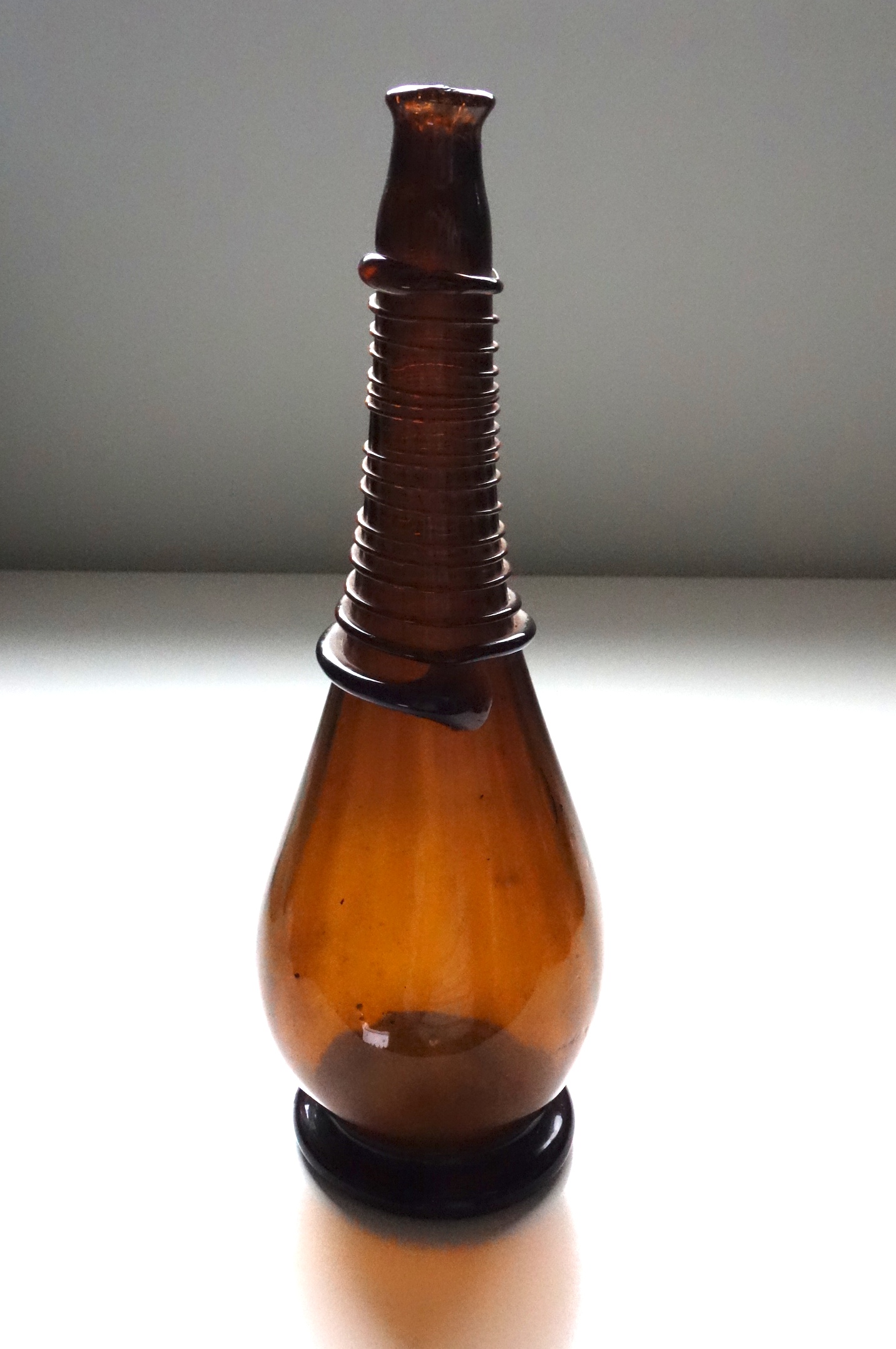
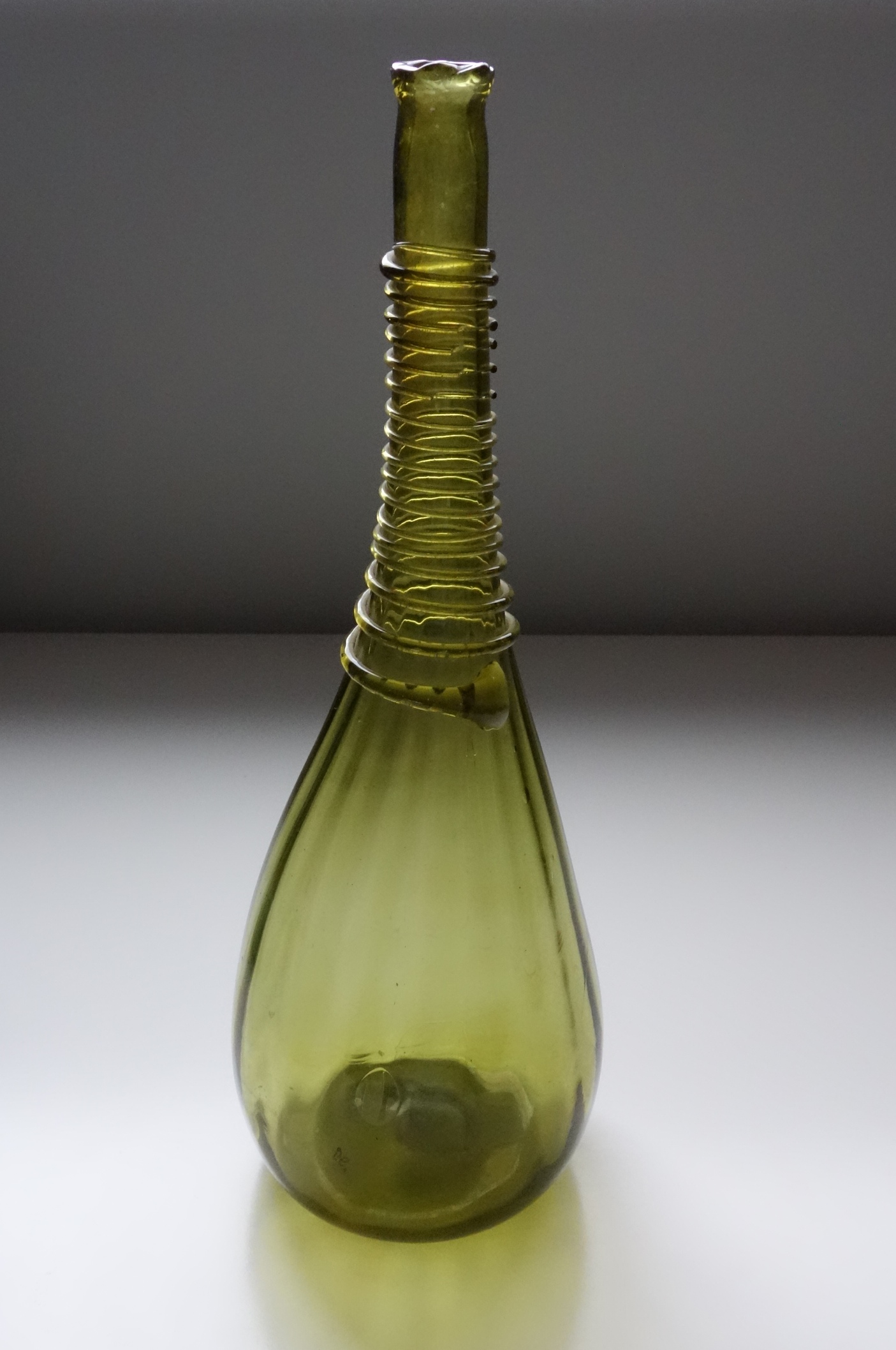
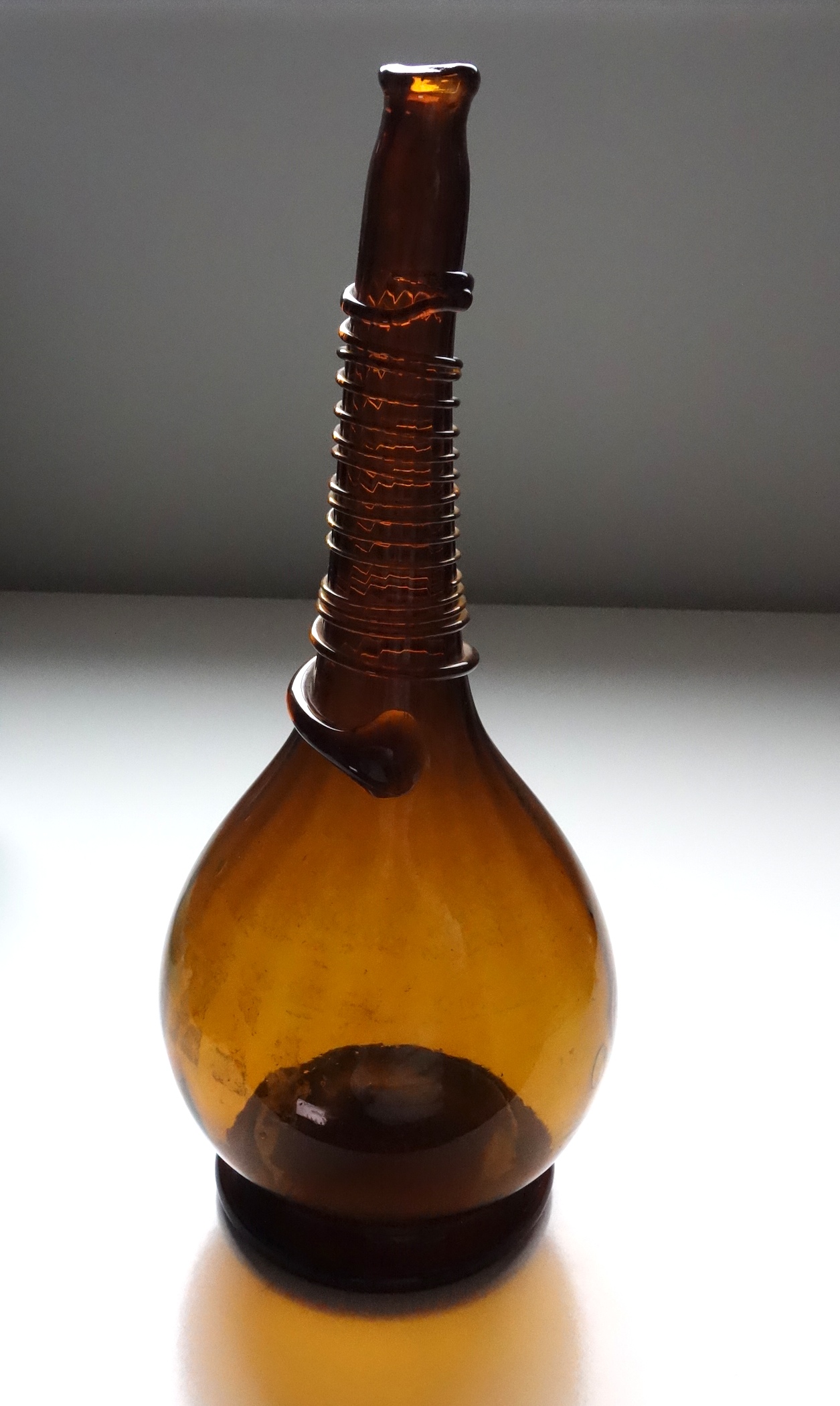
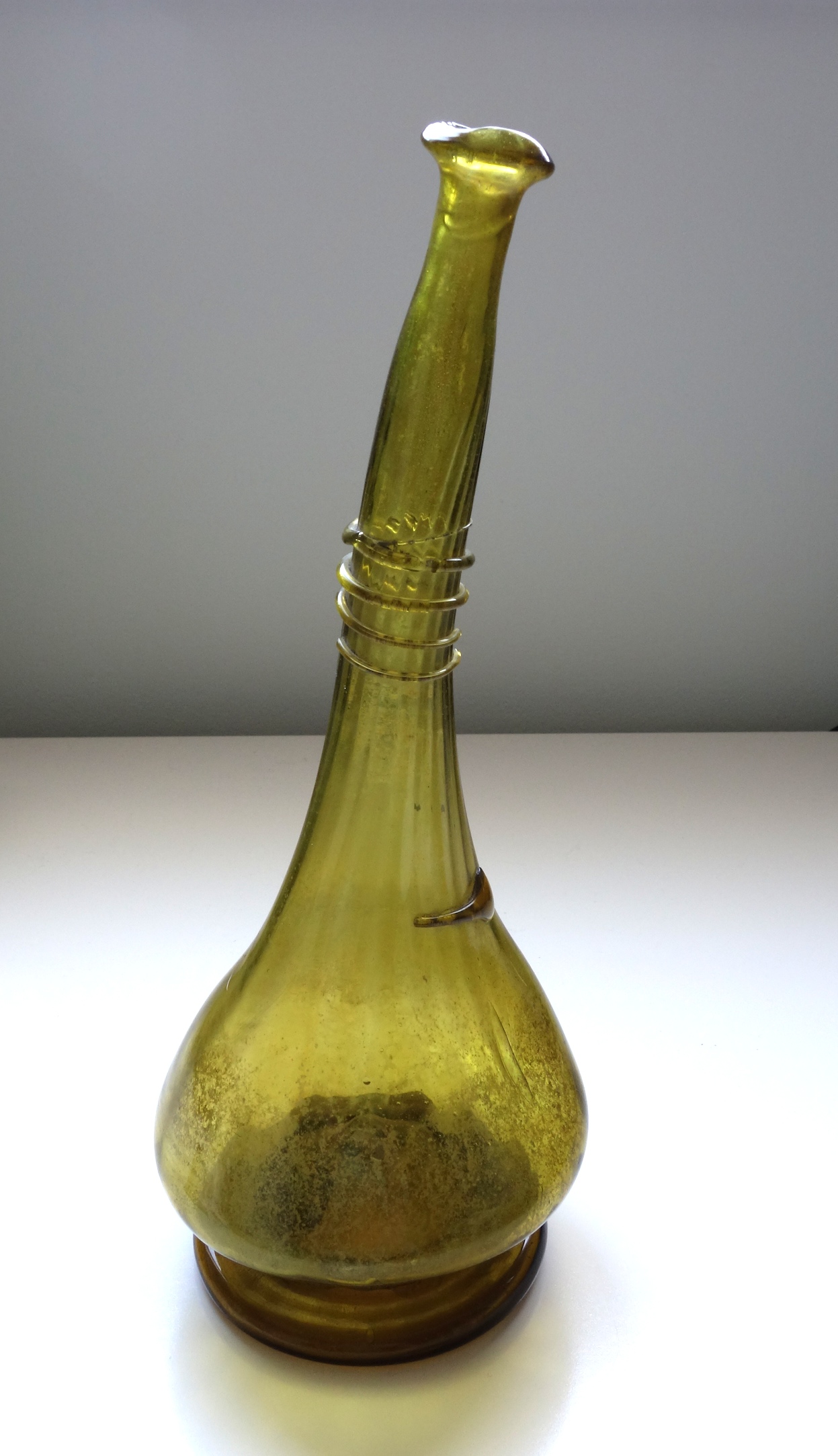
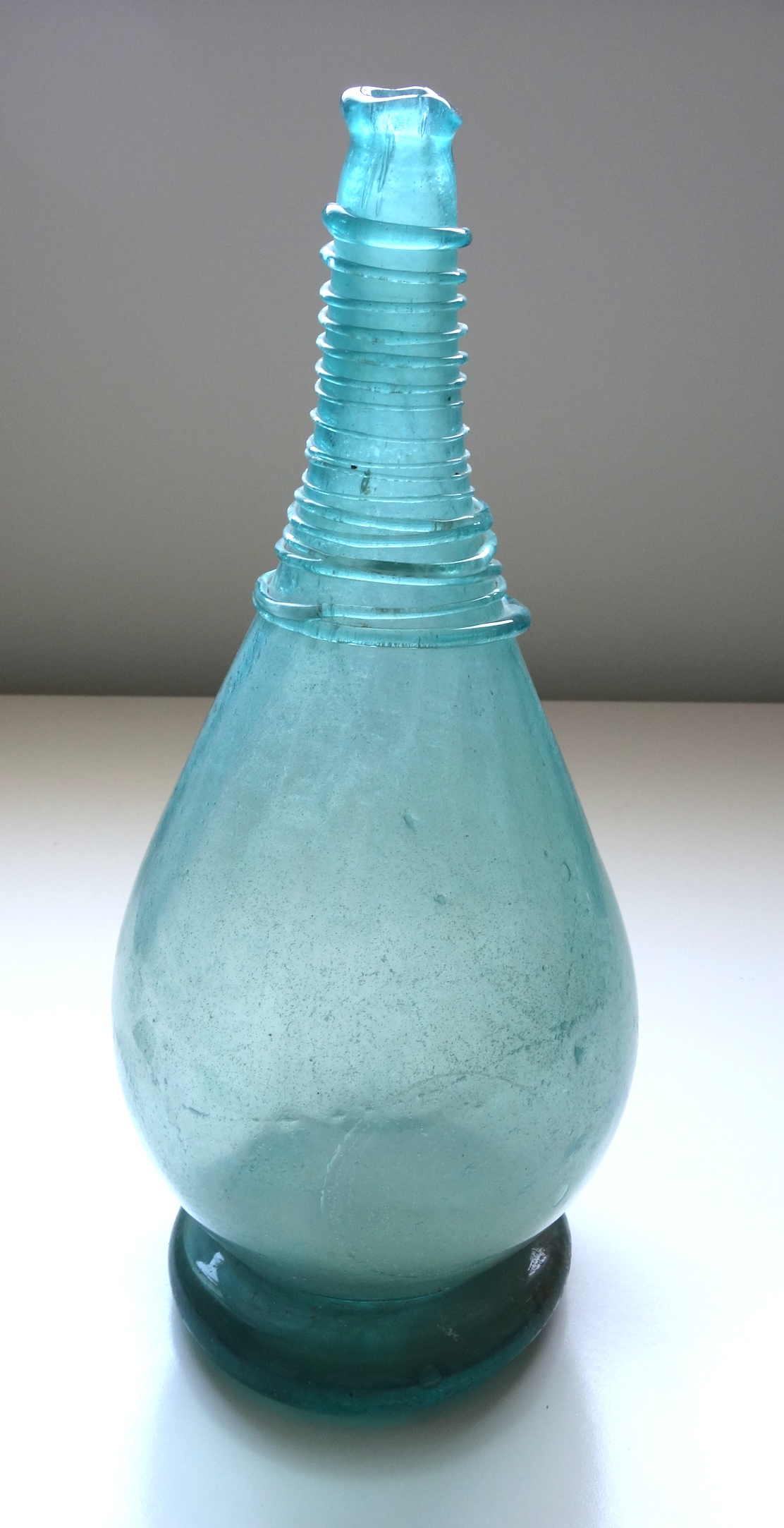
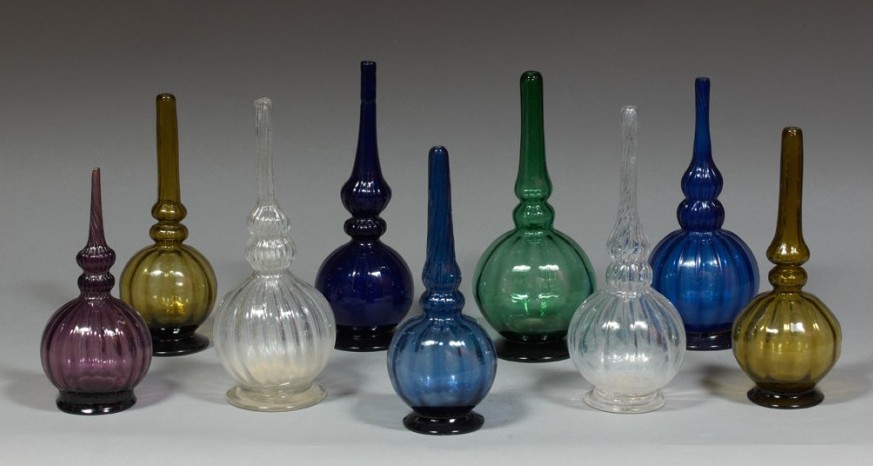
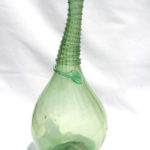
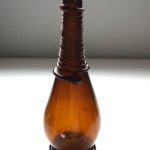
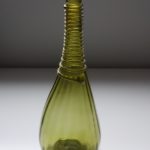
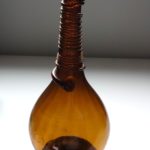
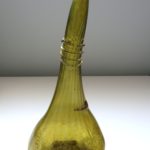
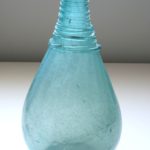
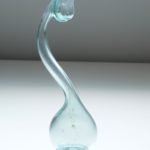
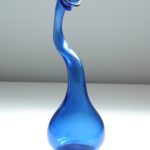
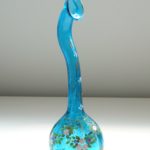
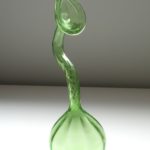
I have a green blown glass rosewater sprinkler similar to PC-119 with gilt and flower painting. I picked it up at a thrift store and haven’t been able to find any information about it. It stands 12 1//2 ” high. Has a ribbed neck and lots of bubbles in the base. If possible can I get some information as to age and origin?
Hi Cathy,
It is of 20th century production, but I can’t tell you for certain about the origin. It sounds very similar to two in the collection.
Phil